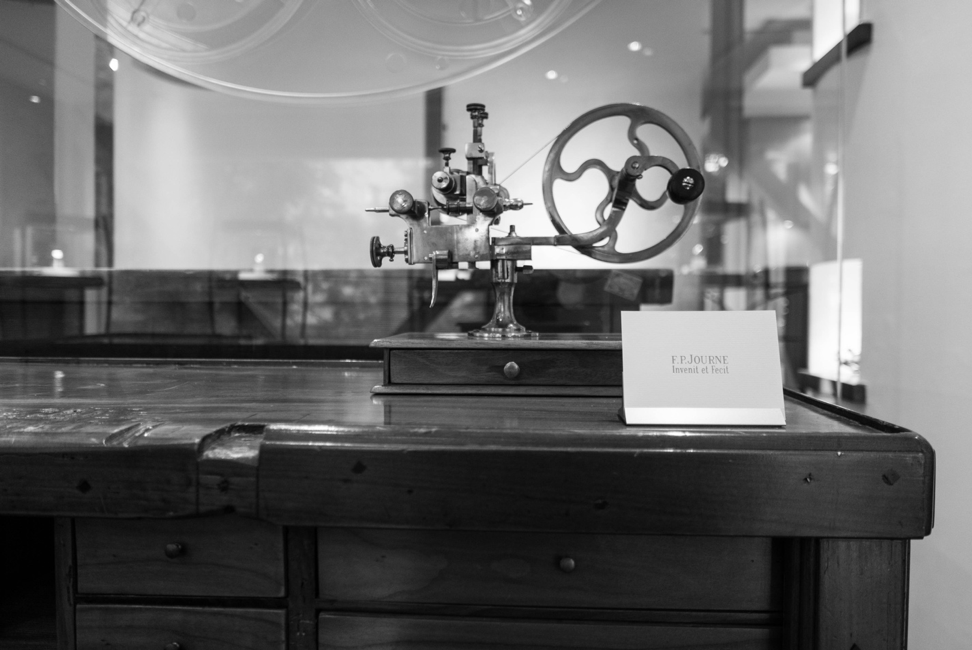Collector’s Guides • 03 Oct 2018
The Allure of Patek Philippe Minute Repeaters
There are three complications for which Patek Philippe is arguably most renowned: the worldtime watch, about which I wrote here, the perpetual calendar chronograph, and the end-game grail – the minute repeater. The minute repeater, first completed by Patek in July of 1845, is the complication which one chases when the appeal of all the other pursuits, however elusive they once were, has been exhausted: the chronograph, the annual calendar, the perpetual calendar, the tourbillon wristwatch – in the words of Shakespeare, perhaps true of all collectors – “past reason hunted and, no sooner had, past reason hated.” There is no other complication, save perhaps to some rather lesser degree, the rattrapante chronograph, whose design, manual assembly, and iterative adjustment demands as much of a watchmaker’s prowess as that of the minute repeater; its acquisition, as much of a collector’s pockets, patience, and tenacity.
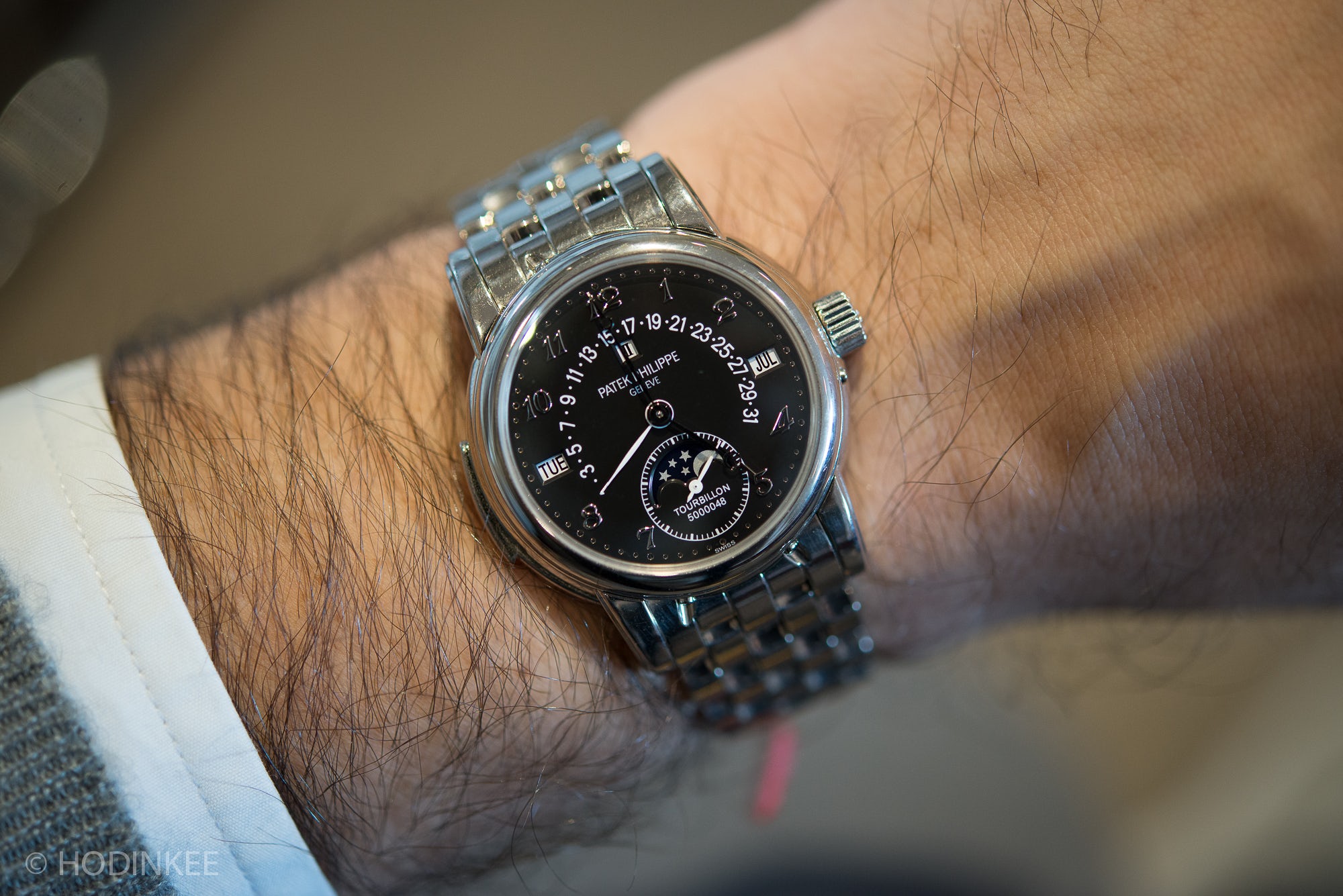
Aural Aesthetics
The analysis of any other complicated wristwatch is limited to the metrics of accuracy, tactile engagement, robustness, visual cohesion. But the nature of a chiming complication brings with it highly qualitative, yet often universally unanimous judgment on its aural aesthetics – a beautiful chime is a function of the quality of attack, harmony, pitch, volume, resonance, rhythm, and frequency. To create a repeater that works reliably, much less one that sounds fabulous, is an ability limited to perhaps five or six maisons: as is true with any creative or technical endeavour, particularly at the top end, a tiny minority of watchmakers produce a disproportionate preponderance of minute repeaters worth their chime – this is not to suggest that there are, in absolute terms, many repeaters designed or produced in the first instance – the Pareto, or inverse-power-law distribution. Laurent Junod, long-time technical director at Patek Philippe, suggests that the number of watchmakers competent enough to make a repeater to be no more than fifty in Switzerland, of which fifteen of them work for Patek.
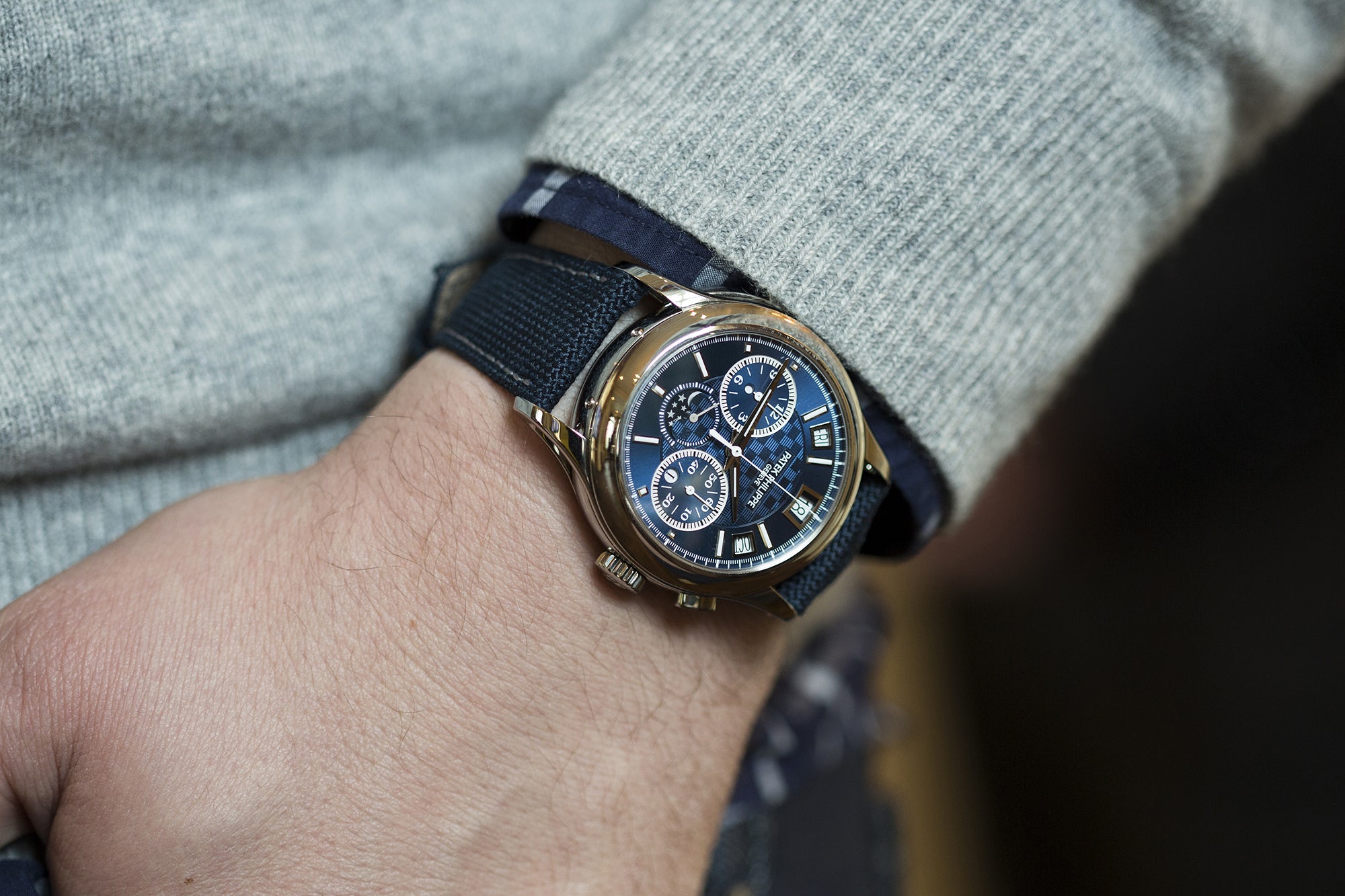
The Undisputed Master of Minute Repeaters
That Patek Philippe is at the apex of the minute-repeating hierarchy is recognised beyond dispute, as demonstrated by the extraordinary performances of the top bids Refs. 3939A, 5016A, and 5208T uniquely developed for the Only Watch charity auctions for Duchenne Muscular Dystrophy in 2011, 2015, and 2017 respectively; the 2014 sale of the “Graves Supercomplication” commissioned in 1925 by one of the foremost patrons of haute horlogerie, the New York banker Henry Graves, for CHF24 million, making it the most expensive watch ever sold to this day. Anecdotally – if you were to step into a room occupied by the most distinguished collectors and asked each “What modern watch do you aspire to own if barriers to entry were no consideration?”, the reply would overwhelmingly be “A Patek Philippe minute repeater”.
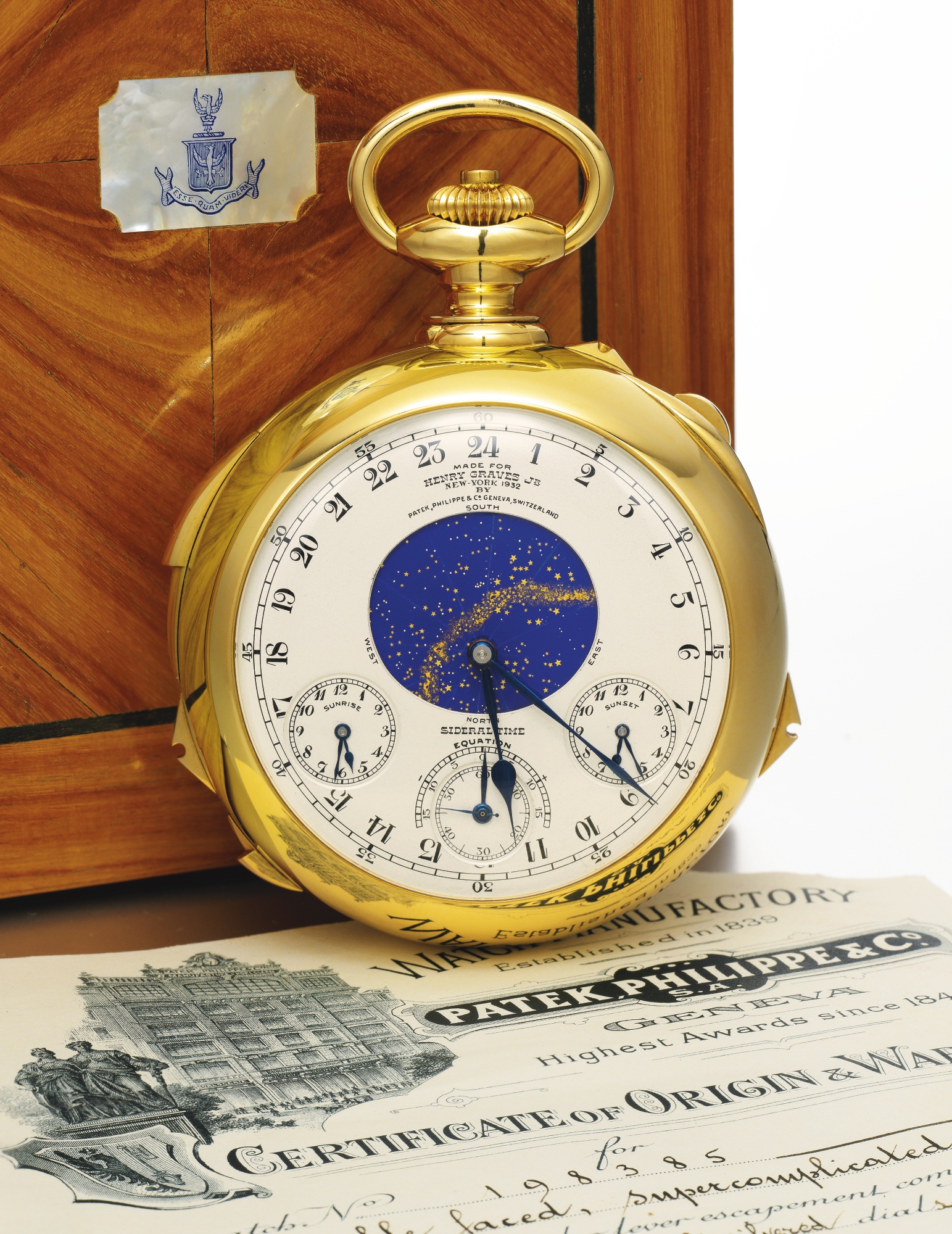
Telling the Time in the Dark
I was first acquainted with this complication as a fresh teenager, in Arthur Conan Doyle’s Sherlock Holmes: The Case of Lady Sannox.“The surgeon pressed the spring of his repeater and listened to the little tings which told him the hour. It was a quarter past nine. He calculated the distances, and the short time which it would take him to perform so trivial an operation…” It is precisely for this function that the repeater was designed: to tell time before the advent of Edison’s brilliance (or of Tesla’s, if one insists) with the electric light, and much later, with Madame Curie’s noble, if ultimately unfortunate, discovery of the phosphorescent properties of radium. For this reason minute repeaters were also adopted by the visually-impaired. Ralph Teetor, prolific American inventor and engineer (most notably of the automotive cruise-control system) and acquaintance of fellow Patek Philippe patron, James Ward Packard, had in 1925 commissioned a platinum-and-gold cushion-cased repeating wristwatch. Teetor had been blind from the age of five from an accident in his workshop.
The President’s Approval
The repeater as a concept has become more palpable of late: I have had the quite recent privilege of handling, and listening to, the Refs 5539G and 5078R, with their respective white- and rose-gold cases. Owing to the plethora of contributing, and interacting, variables involved in determining the tone, volume, and tempo (the sub-factors of which are mentioned in paragraph two) of a particular repeater – the length, diameter of the gongs and their hardness, the case material, the physical relationship, fit, of the repeater movement relative to its case; these are but a few – it is impossible to decisively predict that a particular combination of materials and physical properties will produce an acoustic profile exactly matching that of a similar previously-cased, approved (by the ear of the President, Mr. Thierry Stern) repeater. It is because of this inherent unpredictability that only a maison like Patek Philippe can, with one foot firmly in order (in the Jungian sense) – complete mastery of the entire spectrum of watchmaking – afford to have the other in chaos, or the unknown.
Repeater Construction
The construction and optimisation of a Patek Philippe repeater is as follows: the gongs – usually circular, but analogous to a triangle in a classical orchestra – an alloy of hardened steel, with diameters ranging from .48 to .60 mm, are made by hand, one at a time, the amplitude of their vibration adjusted by the watchmaker iteratively filing away from their base; the pitch modified by filing away from the tips of the gongs. With the exception of the new, worldtime-minute repeating 5531R, whose gongs are directly attached to the case-band, the gongs are soldered to a boss, or base, which is then attached to the movement.
Patek Philippe makes 21 different grades each of standard (approximately one full circumferential length) and cathedral (approximately two full circumferential lengths) gongs; cathedral gongs, as found in the Refs. 5178, 5074, and 5374 et al, tend to produce very rich tones with particularly protracted reverberation. They are however, immensely challenging to manipulate: as cathedral gongs are only secured at one point, a helical arrangement of the gongs and recesses in the case are necessitated to preclude the gongs making contact with each other, or with the case, or the movement. There are two gongs; high- and low-pitched, therefore enabling three permutations of chimes – low, high-low, and high – for hours, quarters, and minutes. The fundamental parameters for Patek repeaters are an intensity of 60 decibels, and, for the longest possible strike – at 12:59 – chiming for 18 seconds.
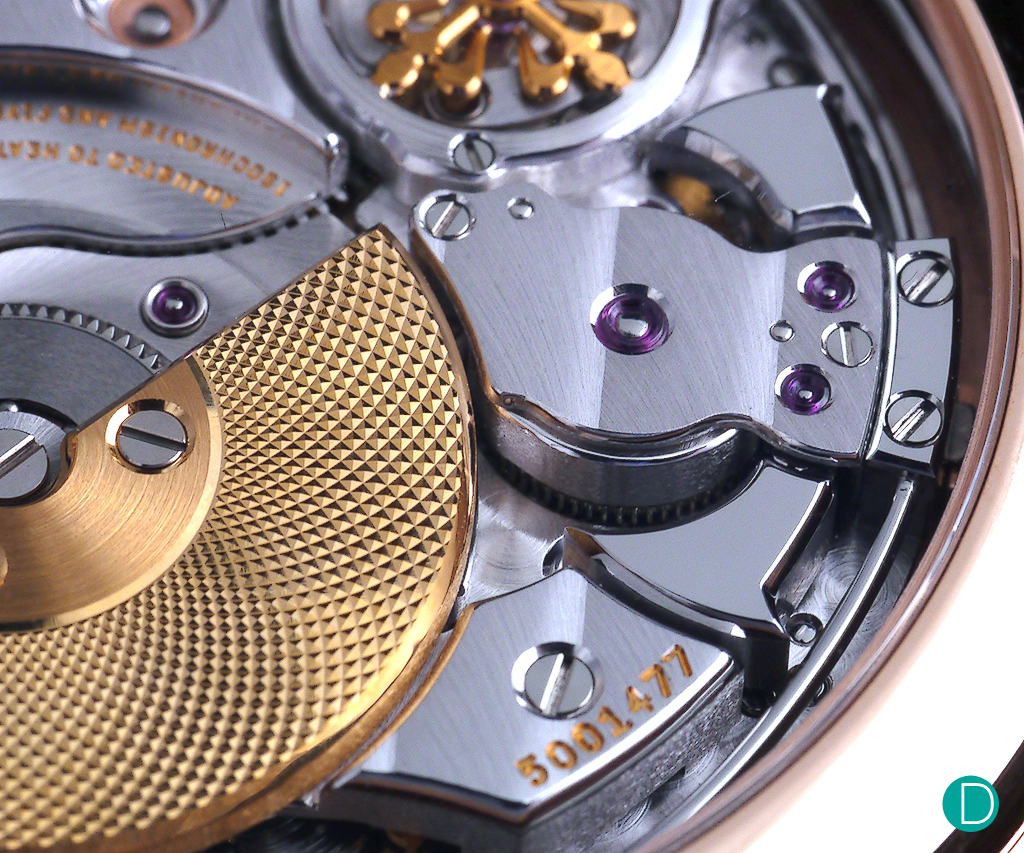
The Force Behind the Strike
The hammers, analogous to the metal ‘beater’ complementing the aforementioned triangle, possess an important relationship to the gongs: their mass, the force of their strike, as well as their recoil displacement, must be such that the volume is good, but not so great as to produce undesirable, extraneous noise. The rate at which the hammers hit the gongs is regulated by a centrifugal governor, silent in operation, unlike that of the low-pitched buzzing of the more traditional anchor governor. Excellent power expenditure and hence linearity in tempo is a trait of all Patek Philippe repeaters, not self-evident in other lesser repeaters; the rate of rotation of the (secondary) mainspring barrel is modulated such that the tempo does not perceptibly weaken during the striking of the final few minutes.
The centrifugal governor was first developed and perfected by Patek Philippe for the Calibre 89; fitted unto the last wheel of the governor train is a two-armed spindle – the arms of which are weighted at the ends and tensioned by minuscule springs – as the spindle rotates, there is a trade-off between the increased moment of inertia and angular acceleration, thereby regulating the rate of chiming; the (admittedly tired) analogue is a ballerina extending her arms to reduce her rate of rotation. Here the hammers are, in all their black-polished glory, displayed to full effect in the Ref. 5539G.
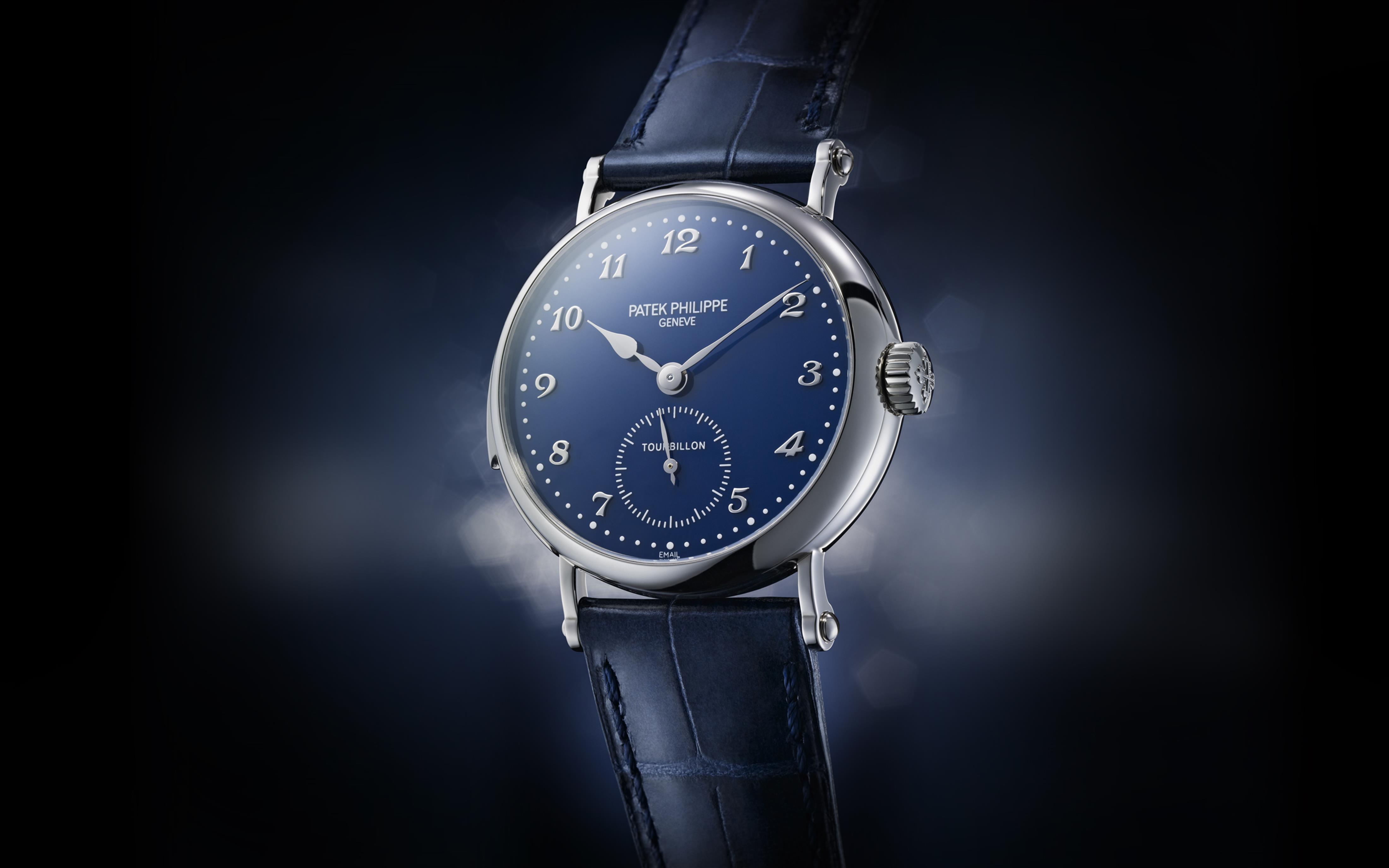
Effects of Case Materials
Perhaps most interesting is the choice of case material: yellow gold, rose gold, white gold, and platinum – these are currently offered in the standard catalogue; there is always the annual Only Watch charity auction to anticipate should one desire to acquire a unique steel- or titanium-cased Patek repeater. The case material which most collectors concur is likely to produce the most agreeable combination of volume, tone, reverberation, and overall warmth (a rich sound with low frequency) is rose gold, which for its relative predictability, is also the safest (so to speak), and hence the traditionalist choice for a first repeater. It is difficult to exactly delineate the nature of the sound a yellow or white gold case will produce relative to a rose gold case, owing to the many aforementioned confounding variables – even a gem-set bezel has an effect on sound transmission – though it is said that a white gold case yields a more crystalline, if harder tone, with higher-frequency, higher-amplitude peaks.
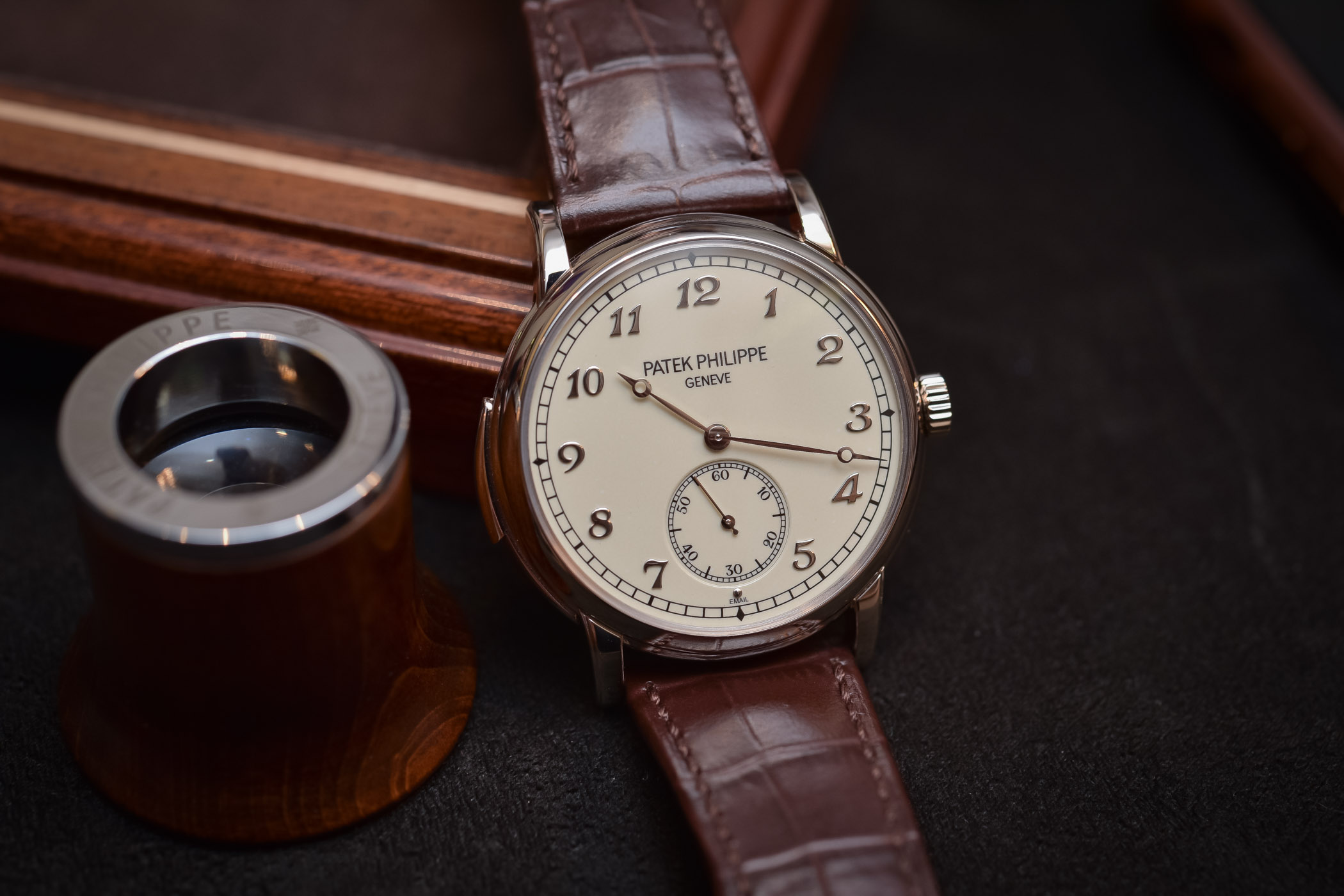
A platinum case is perhaps the most fascinating – one could think of the statistical distribution of the acoustic qualities of Pt-repeaters as being leptokurtic, or heavy-tailed – what this implies is that for every platinum repeater which has a muted, slightly austere tone, with a relatively narrower range of frequencies (owing to the density of the metal) – there is another with the potential to be exceptionally exquisite, distinct to that of any gold case; sonorous, loud, rich, crystalline, without being harsh. White, rose, or yellow gold are very likely to produce an excellent chime – as would be expected of any Patek Philippe minute repeater – but should one possess the ability to acquire multiple repeaters, a platinum case may well be a worthy option. My suggested order of acquisition would be: 5074R, 5539G, 5178G, 5208P. One has to submit an application through your Authorised Dealer to acquire a Patek Philippe minute repeater; justification would involve your motivation for acquisition, philosophy for collecting in general, your past patronage and natural progression of collecting. Mr Thierry Stern makes the final decision.
From Beginning to End
The process for a Patek Philippe minute repeater to pass muster is such: the single watchmaker who works on the repeater from beginning to end – typically 200 to 300 hours of assembly, excluding further optimisation – approves it by him-, or herself; it then proceeds to a anechoic, echo-free chamber, where the parameters of its chimes are recorded and computationally analysed against the template of previously approved and archived repeaters, ensuring continuity in the acoustic qualities across all Patek chiming watches. The repeater is then presented to the head watchmaker overseeing the chiming complications, and then finally – and most famously – to Thierry Stern, President, for his approval; in the same way as it was presented to the ear of his father and grandfather before him. The great majority of repeaters are approved by this stage, though not to the extent where it is a mere formality.

Donald de Carle writes in his seminal Complicated Watches and their Repair, “We have all heard the phrase, cool, calm and collected, and it can be applied to meet many occasions, but it has a real personal significance to the person undertaking the care of repeaters…it is for the student to make himself proficient, by acquiring through practice, the mentality necessary to do the work now to be discussed.”
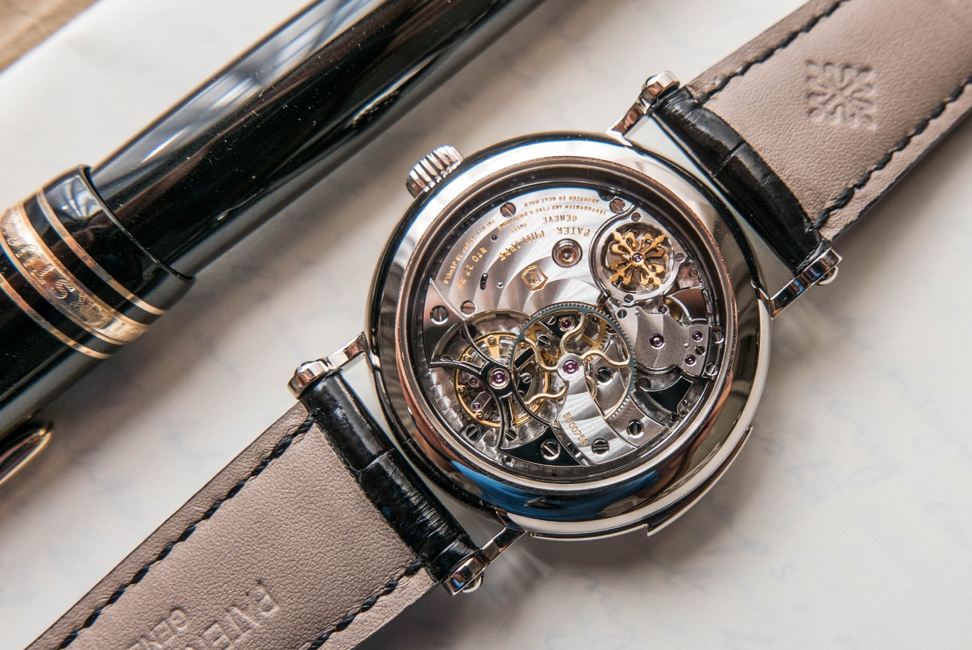
I will be going to an omakase dinner with a dear friend this week; there is some continuity between the uncompromising excellence of a hardened itamae and that of a watchmaker who single-handedly creates a minute repeater. Stoic in demeanour, intensely invested in perfection – their work a reminder that these heights are attained with decades of single-minded commitment to one complex task. With such multi-sensory experiences, a virtuoso can afford to push the bounds of the known only when he, or she, has mastered the rules; the resultant product revivifying one’s existing notions of human achievement. Born of purpose, persisting in dispensability, chosen for fascination – the beauty of the minute-repeater a microcosm of the philosophy of fine watchmaking and collecting in toto.
